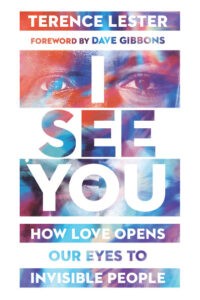 Summary: All people are made in God’s image, which can help us see and help the marginalized.
Summary: All people are made in God’s image, which can help us see and help the marginalized.
I See You was a book that my book club read. I have some history of working with the homeless. I volunteered for four years during college with Olive Branch Mission in Chicago (at their traditional emergency shelter and food program). Later, I did a summer internship in their drug and alcohol rehab program and then worked part-time in exchange for room and board for a couple of years of grad school. And my MSW internship was with the Chicago Coalition for the Homeless. I have worked directly with homeless people and on homeless policy, although my professional and volunteer work has not been with the homeless for a couple of decades now.
There is always a tension in advocacy books like I See You between helping people see the systems that contribute to the problem and helping readers see individuals impacted by the problem. If you concentrate too much on the system, then it can be dehumanizing and abstract. If you concentrate too much on the individuals, you can humanize some people impacted by the problem but not see the larger structure of society that contributes to the problem. I think I See You focuses too much on the individual, which is the tendency for books oriented toward evangelicals.
I See You led to a lot of good discussions with my book group, but it is more oriented toward introducing the problem of homelessness and felt a little too simplistic in its approach to me. The main idea is summarized in this quote:
“The theory for a long time—coming not only from the right but also from some Democrats—is that poverty means that there’s something wrong with your character, that you’ve got bad habits, you’ve got a bad lifestyle, you’ve made the wrong choices.” In this book I want to help deconstruct some of the misconceptions we have about the poor and tell you the stories of those who are experiencing poverty.
He is clearly right that poverty has a moral judgment to it. Lester defines poverty as a lack of access, which has truth to it. He made a connection between spiritual and physical poverty to draw a connection, but that connection was sometimes strained. His connection, “We carry spiritual poverty and need someone else to pay that debt, which of course is what Jesus did,” depends on a traditional Penal Substitutionary Atonement model, which I think distorts both spiritual and physical poverty.
Lester addresses the lack of understanding many people have about poverty and homelessness.
“Ignorance is defined as simply a lack of knowledge and information, but it’s what we do in reaction when we are faced with our own ignorance that makes all the difference. The trap I’ve seen most people get into is believing the way they see the world is the only way the world exists, that what they see and experience is the truth.”
Stories can help people understand that homelessness and poverty have complex causes and that understanding the stories of people who are homeless can give greater context and help us have empathy for the homeless. However, one of the problems is that gaining more insight does not always help. Not all stories are positive ones. We can gain understanding and confirm our prior assumptions because we will assume that the stories that match our assumptions are the standard ones, and the stories that do not match our assumptions are the exceptions. The homeless person who does not want our offer of food or we see regularly asking for money can confirm our assumption that homelessness is primarily about laziness. The reality is that there are no silver bullets that will solve all types of homelessness. Mental health issues are real and a significant cause of homelessness, but additional mental health services will do nothing for those who are homeless primarily because of a lack of affordable housing. Addiction is a significant cause of homelessness, but additional recovery programs will not address people fleeing domestic violence.
Lester ends the book with a call to go deeper into what we are called to do. For some, that will be homelessness, and for others, it will be something else. He is right that depth of work will produce longer-term results than moving from problem to problem.
I See You made a good discussion book for our book group. But I think it was focused too much on introductory material. For those new to homelessness, it can be a good introduction. Still, I also think it will be somewhat frustrating because many people looking for an introduction also want simple solutions to that problem. Lester avoids simple solutions and concentrates primarily on personal relationships to address homelessness. Those personal relationships are essential, but I imagine that most people will walk away without any real change in their lifestyle or approach to homelessness because real change will have a significant cost in time and attention.
I See You: How Love Opens Our Eyes to Invisible People by Terence Lester Purchase Links: Paperback, Kindle Edition